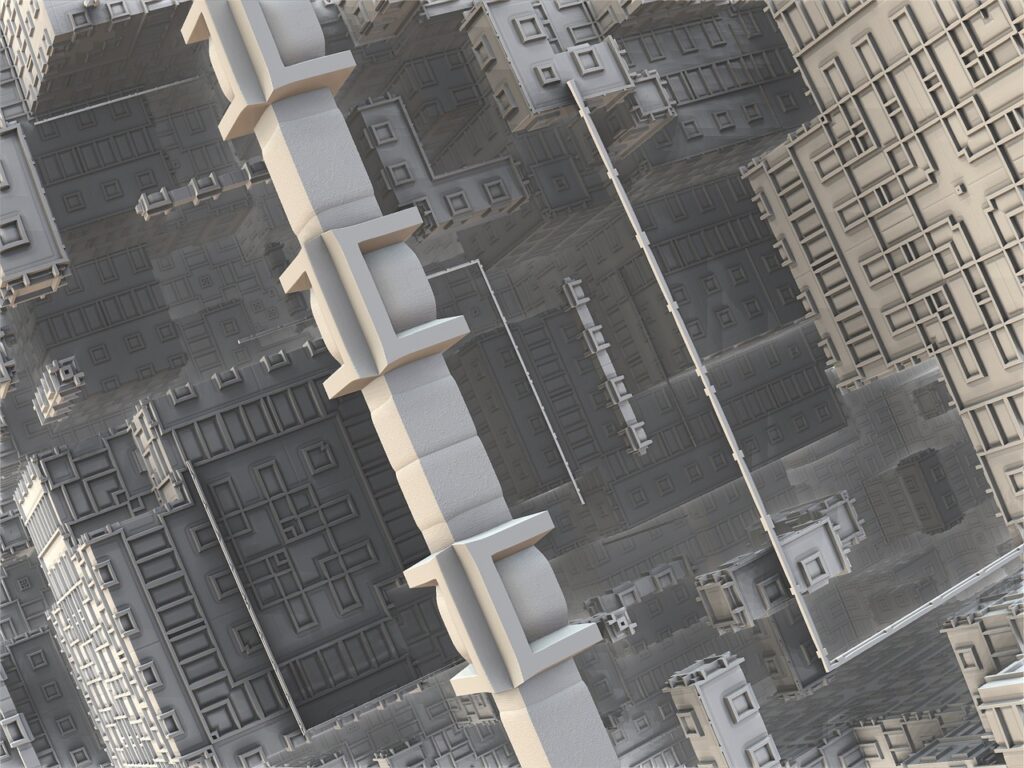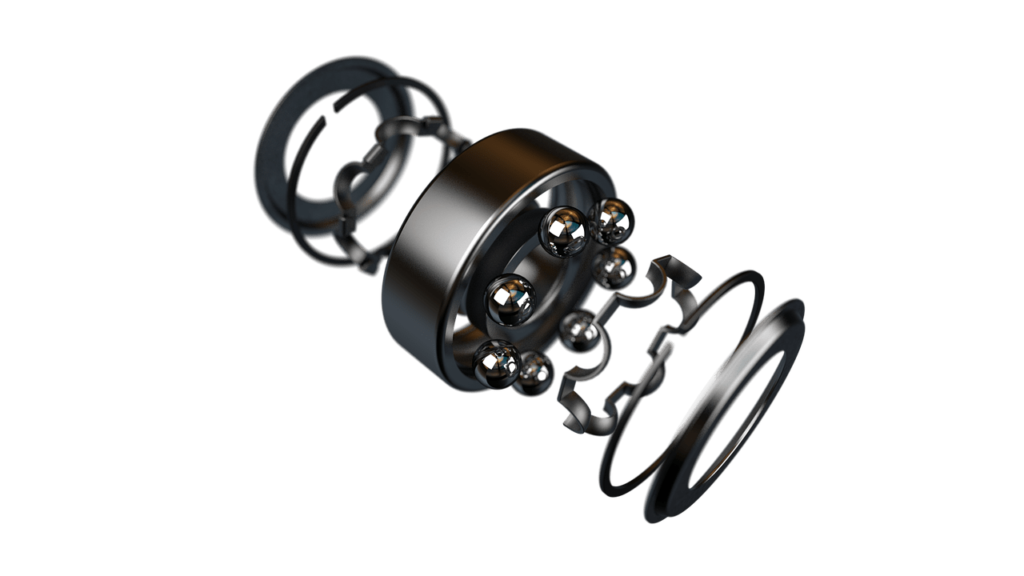In the rapidly evolving world of construction, staying ahead of technological advancements is essential for the success and long-term viability of your business. Embracing innovative technologies not only enhances efficiency and productivity but also allows you to better meet the demands of an increasingly tech-savvy clientele. From robotic automation to virtual reality simulations, this article will explore the latest trends and strategies to help you future-proof your construction business and thrive in the digital age. So, buckle up and get ready to take your business to the next level of technological excellence.

This image is property of pixabay.com.
1. Embrace 3D Printing and Robotics
Implementing 3D Printing in Construction
In the rapidly advancing field of construction, implementing 3D printing technology can revolutionize the way we build. 3D printing, or additive manufacturing, allows for the creation of complex structures and intricate details with ease and precision. By embracing 3D printing in construction, you can streamline the construction process, reduce waste, and even create customizable elements for your projects. Whether it’s printing concrete columns or intricate architectural features, 3D printing offers endless possibilities in construction.
Exploring the Potential of Robotics in Construction
Robots are becoming increasingly common on construction sites, and for good reason. They can perform repetitive tasks with accuracy and efficiency, freeing up human workers to focus on more complex and creative aspects of the job. From brick-laying robots to autonomous vehicles for material transportation, robotics in construction can greatly enhance productivity and safety. By exploring the potential of robotics in your construction projects, you can improve project timelines, reduce costs, and create a safer work environment.
Training Your Workforce to Operate 3D Printers and Robots
As you embrace 3D printing and robotics in your construction business, it is essential to train your workforce to operate these technologies effectively. Provide comprehensive training programs that cover the operation, maintenance, and troubleshooting of 3D printers and robots. By equipping your team with the necessary skills and knowledge, you can ensure a smooth transition to these technologies and maximize their potential in your construction projects. Additionally, offer ongoing training and support to keep your workforce up to date with the latest advancements in 3D printing and robotics.
2. Adopt Building Information Modeling (BIM)
Understanding the Benefits of BIM
Building Information Modeling (BIM) is a digital representation of the physical and functional characteristics of a building. By adopting BIM in your construction projects, you can benefit from improved collaboration, enhanced visualization, and streamlined project coordination. BIM allows for the integration of design, construction, and facility management data, leading to better decision-making throughout the project lifecycle. From clash detection to accurate quantity takeoffs, BIM can significantly improve project outcomes and reduce costly errors.
Investing in BIM Software
To fully utilize the potential of BIM, it is crucial to invest in the right BIM software. Look for software that offers features such as 3D modeling, clash detection, quantity takeoff, and project scheduling. Consider the specific needs and requirements of your construction projects when choosing the software. Additionally, ensure compatibility with other commonly used software and platforms in the construction industry for seamless collaboration and data exchange.
Training Your Team in BIM Implementation
Adopting BIM requires proper training for your team to effectively implement this technology in your construction projects. Provide comprehensive training programs that cover BIM software operation, data management, and collaboration workflows. Encourage your team to stay updated with the latest advancements and best practices in BIM implementation. By investing in the training of your workforce, you can fully leverage the benefits of BIM and drive efficiency and productivity in your construction projects.

This image is property of pixabay.com.
3. Explore Virtual and Augmented Reality
Using Virtual Reality for Design and Planning
Virtual Reality (VR) technology allows for immersive and interactive experiences, making it an invaluable tool for design and planning in construction. By using VR, you can create realistic virtual environments that enable stakeholders to visualize and experience spaces before they are built. This enhances communication, enables early detection of design flaws, and facilitates informed decision-making. Incorporate VR technology into your design and planning processes to improve design accuracy, enhance client satisfaction, and reduce costly design changes during construction.
Applying Augmented Reality in Construction Projects
Augmented Reality (AR) overlays digital information onto the real world, providing real-time visualizations and data overlays. In construction, AR can be used for on-site visualization, safety training, and equipment maintenance. By utilizing AR, workers can accurately visualize construction elements, identify potential hazards, and access real-time project data directly in their field of view. Incorporating AR technology into your construction projects can improve worker safety, reduce errors, and enhance project efficiency.
Training Employees to Use VR and AR Tools
To fully utilize VR and AR tools in your construction projects, it is essential to train your employees to use these technologies effectively. Provide comprehensive training programs that cover VR and AR software operation, equipment handling, and integration with other construction technologies. Encourage continuous learning and exploration of VR and AR applications in construction. By equipping your workforce with the necessary skills, you can unlock the immense potential of VR and AR in your construction projects.
4. Harness the Power of Internet of Things (IoT)
Integrating IoT into Construction Equipment
The Internet of Things (IoT) refers to the interconnected network of physical devices that collect and exchange data. In construction, IoT can be utilized to monitor and control construction equipment remotely. By integrating IoT into construction equipment, you can track equipment performance, schedule maintenance, and optimize resource allocation. Real-time data from IoT sensors can enable proactive decision-making, reduce downtime, and improve equipment efficiency.
Utilizing IoT Devices for Smart Building Management
IoT devices can also be utilized for smart building management, enabling the monitoring and control of various building systems. From HVAC and lighting to security and access control, IoT devices can provide real-time data to optimize energy consumption, improve occupant comfort, and enhance overall building performance. By utilizing IoT devices for smart building management, you can reduce operational costs, improve sustainability, and create a more comfortable and efficient built environment.
Enhancing Safety and Efficiency with IoT Sensors
IoT sensors can play a vital role in enhancing safety and efficiency on construction sites. By deploying sensors for environmental monitoring, equipment tracking, and worker safety, you can collect real-time data to identify potential hazards and optimize workflows. For example, sensors can detect hazardous gas levels, alerting workers and triggering safety protocols. By harnessing the power of IoT sensors, you can proactively manage risks, improve safety compliance, and drive efficiency in your construction projects.

This image is property of pixabay.com.
5. Invest in Drones and Aerial Imaging
Utilizing Drones for Surveying and Inspection
Drones have rapidly emerged as valuable tools in construction, especially for surveying and inspection tasks. With their ability to capture high-resolution aerial imagery and collect data from remote or inaccessible locations, drones can greatly improve the accuracy and efficiency of surveying and inspection processes. By utilizing drones, you can reduce costs, minimize manual labor, and obtain comprehensive data for accurate project planning and monitoring.
Capturing High-Quality Aerial Images for Documentation
Aerial imaging through drones enables construction professionals to capture high-quality images and videos for documentation purposes. These visuals provide detailed site documentation, progress tracking, and record keeping. High-resolution aerial images help with project analysis, maintaining accurate records, and facilitating effective decision-making. By investing in aerial imaging technology, you can enhance project documentation, improve communication with stakeholders, and streamline project management.
Training Staff to Operate Drones and Analyze Data
To fully benefit from drones and aerial imaging, it is essential to train your staff in operating drones and analyzing the acquired data effectively. Provide comprehensive training programs that cover drone operation, safety protocols, and data analysis techniques. Ensure that your staff is well-versed in relevant regulations and practices for safe and legal drone operation. By equipping your team with the necessary skills, you can unlock the potential of drones and aerial imaging in your construction projects.
6. Implement Advanced Data Analytics
Leveraging Big Data for Better Decision Making
In today’s digital age, construction projects generate vast amounts of data. However, without effective data analytics, this data remains untapped potential. By leveraging big data and advanced analytics, you can gain valuable insights that drive better decision-making. Analyzing historical project data, market trends, and external factors can provide valuable guidance for project planning, risk assessment, and resource allocation. Implement advanced data analytics tools to harness the power of big data and make data-driven decisions in your construction projects.
Utilizing Predictive Analytics to Improve Project Planning
Predictive analytics uses historical data and statistical algorithms to forecast future outcomes. By utilizing predictive analytics in construction, you can anticipate challenges, identify potential risks, and optimize project planning. Predictive analytics can help assess project timelines, resource requirements, and cost estimates. By incorporating predictive analytics into your project planning processes, you can improve project success rates, reduce delays, and enhance overall project efficiency.
Training Your Team in Data Analysis and Interpretation
To effectively implement advanced data analytics in your construction projects, training your team in data analysis and interpretation is essential. Provide comprehensive training programs that cover data collection, data cleaning, statistical analysis, and visualization techniques. Encourage continuous learning and exploration of data analytics tools and methodologies. By enhancing your team’s data analysis skills, you can unlock the potential of advanced analytics and drive better decision-making in your construction projects.

7. Embrace Prefabrication and Modular Construction
Understanding the Benefits of Prefabrication
Prefabrication involves the off-site manufacturing of building components, which are then transported and assembled on-site. This construction method offers numerous benefits, including reduced construction time, improved quality control, and increased sustainability. Prefabrication allows for concurrent site preparation and off-site fabrication, saving time and minimizing construction waste. By embracing prefabrication, you can enhance project efficiency, improve cost savings, and achieve faster project delivery.
Incorporating Modular Construction Methods
Modular construction involves the use of pre-engineered building modules that are manufactured off-site and assembled on-site. These modules can be repeated or combined to create a variety of building configurations. By incorporating modular construction methods, you can streamline the construction process, reduce labor costs, and increase productivity. The controlled factory environment ensures consistent quality, while the modular design allows for flexibility and customization. Embrace modular construction to accelerate project timelines and meet the evolving demands of the construction industry.
Training Workers in Prefabrication Techniques
To successfully embrace prefabrication and modular construction, it is crucial to train your workers in the specific techniques involved. Provide comprehensive training programs that cover assembly and installation procedures, quality control measures, and safety protocols specific to prefabrication and modular construction. Encourage cross-training among your workforce to ensure flexibility and adaptability to different project requirements. By investing in training, you can equip your workers with the necessary skills to excel in prefabrication and modular construction projects.
8. Focus on Sustainable Building Practices
Utilizing Green Materials and Technologies
With the increasing focus on sustainability, utilizing green materials and technologies in construction has become crucial. Green materials, such as recycled or renewable materials, can reduce the environmental impact of construction projects. Technologies like solar panels and energy-efficient HVAC systems can minimize energy consumption and carbon emissions. By incorporating green materials and technologies, you can contribute to a more sustainable future, enhance your company’s reputation, and potentially reduce operational costs.
Implementing Energy-Efficient Design and Construction
Energy-efficient design and construction practices can significantly reduce the energy consumption of buildings. Features such as proper insulation, efficient lighting systems, and smart controls can optimize energy usage and reduce utility costs. Additionally, incorporating passive design strategies, such as maximizing natural lighting and ventilation, can further enhance energy efficiency. By implementing energy-efficient design and construction practices, you can create environmentally friendly buildings that offer long-term benefits in terms of energy savings and occupant comfort.
Training Your Team in Sustainable Construction Practices
To effectively implement sustainable construction practices, it is essential to train your team in the principles and techniques of sustainable building. Provide comprehensive training programs that cover sustainable design strategies, green material selection, and energy-efficient construction practices. Encourage your team to stay updated with the latest advancements and certifications in sustainable construction. By investing in the training of your workforce, you can promote sustainable practices throughout your construction projects and contribute to a greener future.

9. Strengthen Cybersecurity Measures
Understanding the Cybersecurity Risks in Construction
As construction becomes more technologically advanced, the importance of cybersecurity cannot be overlooked. Construction companies are increasingly vulnerable to cyber threats due to the digitalization of processes and the interconnectedness of systems. Cybersecurity risks in construction include hacking, data breaches, and ransomware attacks. It is crucial to be aware of these risks and understand the potential impact they can have on your business, including project delays, financial loss, and damage to your reputation.
Implementing Robust Security Protocols
To strengthen cybersecurity measures in your construction business, it is essential to implement robust security protocols. This includes regularly updating software and systems, implementing firewalls and intrusion detection systems, and establishing strong access controls. Conduct regular security audits and risk assessments to identify vulnerabilities and address them proactively. By implementing robust security protocols, you can protect your sensitive data, safeguard your systems, and mitigate the risk of cyber attacks.
Educating Employees on Cybersecurity Best Practices
Your employees play a crucial role in maintaining cybersecurity in your construction business. Educate your employees on cybersecurity best practices to create a culture of security awareness. This includes training on password hygiene, recognizing phishing attempts, and using secure networks for remote access. Encourage employees to report any suspicious activity immediately. By educating your employees on cybersecurity best practices, you can enhance your overall security posture and minimize the risk of successful cyber attacks.
10. Foster Collaboration and Communication
Adopting Collaborative Software and Project Management Tools
Effective collaboration and communication are crucial for successful construction projects. Adopt collaborative software and project management tools that enable seamless communication, document sharing, and real-time collaboration among team members. Cloud-based platforms allow for instant access to project information, reducing delays and improving decision-making. By adopting collaborative software and project management tools, you can enhance overall project coordination, foster team collaboration, and streamline communication across all stakeholders.
Promoting Effective Communication Among Team Members
Promoting effective communication among team members is essential for achieving project success. Encourage open lines of communication and provide channels for sharing ideas, raising concerns, and seeking clarification. Regular team meetings, both in-person and virtual, can facilitate effective communication. Encourage active listening and foster a culture of transparency and respect. By promoting effective communication, you can minimize misunderstandings, resolve issues promptly, and ensure all team members are aligned to project goals and objectives.
Encouraging Cross-Functional Collaboration
Construction projects often involve multiple disciplines and stakeholders, necessitating cross-functional collaboration. Encourage collaboration and knowledge sharing across different teams and departments. Foster a collaborative culture that values diverse perspectives and encourages teamwork. By facilitating cross-functional collaboration, you can tap into the collective expertise of your workforce, leverage innovative ideas, and solve complex problems more effectively. Collaboration across disciplines can lead to improved project outcomes, enhanced client satisfaction, and increased business success.
In conclusion, preparing your business for technological advancements in construction is crucial to stay future-ready. By embracing 3D printing and robotics, adopting BIM, exploring virtual and augmented reality, harnessing the power of IoT, investing in drones and aerial imaging, implementing advanced data analytics, embracing prefabrication and modular construction, focusing on sustainable building practices, strengthening cybersecurity measures, and fostering collaboration and communication, you can leverage the latest technologies to drive efficiency, enhance productivity, and achieve success in the evolving construction industry. Embrace the future now and position your business for long-term growth and competitiveness.